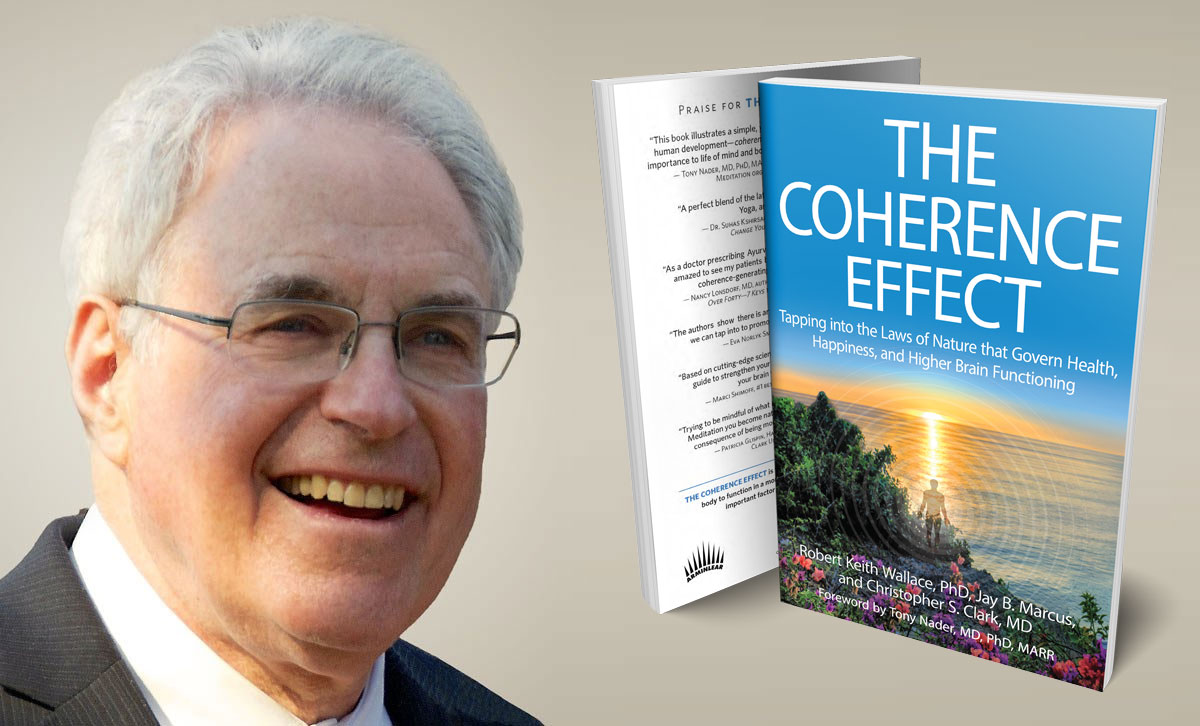A Yogi in the Boardroom (there’s more to yoga than asanas and meditation)

How ancient understandings of mental traits offer a deep knowledge of the jobs we’re suited for, as well as the best times for certain meetings and even for cozying up to the boss. – By Jay B. Marcus and Christopher S. Clark, MD.
The ancient Vedic tradition of India is the source of yoga, meditation, and the life science known as Ayurveda. The latter is gaining interest today even at top medical schools who are evaluating integrative and alternative medicine. Johns Hopkins Medicine agrees that “Ayurveda can have positive effects when used as a complementary therapy in combination with standard, conventional medical care,” Ayurveda | Johns Hopkins Medicine. And Harvard’s Longwood medical campus (composed of its medical and public health school faculties) teaches workshops on how the Ayurvedic daily routines “nourish the deep tissues to sustain energy throughout the year,” Introduction to Ayurveda – Harvard Longwood Campus.
Ayurveda is part of the vast body of Vedic knowledge that has been practiced for centuries by yogis and sages. In Sanskrit, Ayurveda means “knowledge of life and longevity,” not knowledge of health, and its understandings include a deep knowledge of the mental traits that influence individual personalities. This is knowledge that can help people better understand each other, help determine the work a person may be successful at and enjoy, the optimal times for business meetings, and even the best times to impress the boss, a client, or a loved one.
What Determines our Personalities according to Ayurveda?
Ayurveda recognizes that just as regions in the natural world will have fundamentally different characteristics—some dry or desert areas, some high wind areas, some hot, some cold, and some rainy or wet areas—individuals as part of the natural world will also have the counterparts of these characteristics deep within their physiologies. In Ayurveda (as well as in
Traditional Chinese Medicine, the Greek medicine of Hippocrates, and other ancient systems of medicine), the five natural elements of air and space (the lighter elements), earth and water (the heavier elements), and fire, all have their counterparts in the mind and body, which influence how a person behaves. One can know if a person is likely to be suitable for certain tasks, what happens when he or she gets stressed out and becomes imbalanced, and even the disorders the person is prone to. This makes it possible to naturally prevent serious illness through strategies that counteract disorders before they ripen into disease.
According to Ayurveda, what are known as Pitta mind-body types have more of the fire element in their constitutions. They are usually of medium build and may be athletic, have fair skin, and sharp minds, and they have a passionate and fiery nature, which gives them good staying power on projects in which they are interested. They also have good digestion since they have a strong digestive “fire” within. However, when they are imbalanced, the fire element that is so prevalent leads to disorders like ulcers, hot flashes, heartburn, irritability, anger problems, and other, but not all, inflammatory disorders.
Ayurveda specifies the foods that pacify the fiery nature of Pitta-dominant individuals. Of the six food categories classified by taste, Pitta persons should favor what Ayurveda considers cooling foods, which means favoring sweet foods (sweet foods in this system are not just sugary foods, but also rice, wheat, milk, and certain other foods), bitter foods (e.g., leafy greens), and astringent foods (e.g., beans) and reduce spicy, salty, and sour (cheese, tomatoes, citrus and yogurt) foods. The principle behind favoring certain foods and reducing or eliminating others is one of complementarity or doing the opposite in the body of what the disorder is or is likely to be. This is a principle of modern medicine as well when, for example, it prescribes antacids for hyperacidity, and serotonin (aka the happy hormone) for depression, and recommends avoiding citrus, other acidic foods, and spicy foods for those with ulcers.
What does the knowledge of the yogis tell us outside the health area? If a child is having tantrums (Pitta outbursts), Ayurveda recommends giving the child something cooling to eat to pacify Pitta. Its effectiveness is often immediate. In later years, if a Pitta type is scheduled for a conference with someone who can be hostile or antagonistic, he or she might calm his/her own tendency to be hostile by eating something that pacifies Pitta just before the meeting. Ayurveda also has breathing techniques and behavioral recommendations for calming the Pitta disposition. Pitta types particularly need to eat on time and not miss meals.
Since Pitta types have sharp minds and are generally authoritative with good staying power, they would likely be skillful leaders, but their tendency toward irritability and anger when they are out of balance could make them not a good choice for customer service or other situations that place a high premium on tact and diplomacy. Pitta types often have a warrior’s nature, so they might be attracted to and good at jobs like police work or providing physical security, but stressful encounters in those occupations could make them likely to express anger at times when a cool head is needed. Evaluating the person’s Ayurvedic type can lead to many lifestyle recommendations, not just diet and including pairing a Pitta type with a work partner who has a different constitution.
There are also calm Kapha mind-body types in Ayurveda. They usually have heavier builds since the water and earth elements dominate their constitutions. They are usually slow moving, have slow digestion (which can lead to weight issues), and are calm, warm, and likeable people. They can be slower to learn than, for example, Pitta types and Vata types (below), but once they learn, Kaphas are slow to forget. When out of balance, in addition to weight gain they may have congestive disorders (characteristic of the dominance of the water element), high cholesterol, aching joints, laziness, depression, and other disorders. For their diets, they should favor lighter and drier foods to balance their heavier physiologies, and they should favor spicy, bitter, and astringent foods, and reduce sweet, salty, and sour foods. It’s particularly important that they get lots of exercise.
Because of their calmness and likeability, Kapha types could be especially good at jobs requiring contact with customers. Because they don’t by nature move fast or do things quickly, they will probably not be happy working on a fast-moving assembly line or driving for UPS or a similar service, and their easy-going nature might be a good balance when teamed with Pitta personalities.
The third mind-body type, the Vata type, has more of the air and space qualities in their make-up. As a result, they tend to be lighter (thin or wiry builds), and they dislike cold, have dry skin and are generally light sleepers, with a tendency to disorders that reflect more of the Vata characteristics—disorders like anxiety, insomnia, worries, moodiness, constipation (often the result of dryness in the physiology), and menstrual cramps. The foods they should favor are warm and heavier foods (to balance their colder and lighter natures), and sweet, salty, and sour foods, while reducing spicy, bitter, and astringent foods. Oils in food are good to counterbalance the dryness that is often in their bodies.
Vata types are quick-minded, quick to learn but also quick to forget. They often talk and walk fast and are very good at starting and conceiving of projects, but they don’t have the staying power of Pitta types. Vata types can be very changeable and indecisive if not in good balance. Because of how they quickly grasp information, they can make an excellent initial impression. Traveling a lot and not getting good rest are especially detrimental to a Vata person’s health, so jobs that are taxing in that way would be stressful for them.
Other types also exist that are combinations where two types may dominate, such as mostly Pitta, but a lot of Vata as well, and little Kapha. The best way to determine a person’s type is a consultation with an Ayurvedic physician or consultant trained in the technique of “pulse diagnosis,” and trained to recognize lifestyle patterns that lead each type to imbalances. There are also questionnaires that can assist in determining a person’s type.
Jane Pitt is a grandmother and a composer and singer with five albums to her credit. She learned about Ayurveda and body types in 1984 and got many health benefits, but it also helped her in personal relationships. She said, “My late husband was a Kapha type, and I’m Pitta/Vata. So, after learning about Ayurveda we could understand why if we went for a walk, he would amble along and stop whenever he wanted to make a point, and I wanted to be striding. And I was always working on something, and he was happy to relax more. Ayurveda gave us a greater understanding and tolerance of our differences.”
One other feature of at least one form of Ayurveda, the revival known as Maharishi Ayurveda, is that there are times of the day when nature and the human physiology have more or less of the Vata, Pitta, or Kapha elements, which can help determine the best times for certain activities and for sleep.
The Kapha periods are between 6 to 10 in the morning and 6 to 10 in the evening when there are more Kapha elements in the environment, influencing everyone. The more fiery or emotional Pitta periods, when for example, digestion is stronger, but emotions may run higher, are from 10AM to 2PM and 10PM to 2AM. And there are lively Vata periods from 2 to 6 in the morning and afternoon. For managing health, Maharishi Ayurveda’s detailed recommendations include getting to bed during the calmer Kapha period, which means before 10PM, because this more settled period will be conducive to sleep (this also coincides with when the body is releasing melatonin); eating the main meal when the sun, as well as the digestive fire, are at their peak around noon; and getting up naturally (without an alarm clock) in the Vata period (before 6AM or not too much after that), so that the day begins with the clarity and quick-minded Vata qualities.
You might also try organizing the day’s schedule to include certain meetings during the Kapha periods when nature is more permeated with a calming quality, and avoiding the fiery Pitta periods for those meetings when tact and diplomacy are at a premium. A 2012 article in The Wall Street Journal (“The Peak Time for Everything,” Sept., 2012) points to a major analysis of 509 million tweets showing that reading Twitter around 8AM or 9AM can start the day on a cheery note since the tweets at that time tend to be more upbeat (this is a calmer and friendlier Kapha period), and that posts to Facebook around 8PM tend to get the most “likes” (also a Kapha period). And the article says if you want drama in your life, look at the Twitter posts around 10 PM or 11PM (a fiery and passionate Pitta period), and you will find the most emotion-laden posts. Because of the calmness and likeability of Kapha types and in Kapha periods, breakfast or dinner meetings should be the best time for cozying up to the boss, a client, or even romantic overtures.
Yogis and sages have long followed Ayurveda’s guidelines in their quest for higher consciousness through perfecting the functioning of their brains and physiologies. Their strategies were truly holistic and included the times of day when health procedures would have the most effect (something modern medicine is learning through the science of chronopharmacology, or the best times for taking medications); the times of year that were most auspicious for various undertakings; knowledge of the sounds or mantras that would facilitate calmness and coherence in meditation and themselves have a healing effect; knowledge of herbs and herb combinations that promote mental clarity and pacify disorders; knowledge of the signs when exercise is too taxing to the physiology and you need to take a break; and strategies for digestion, elimination, and good sleep. Businesses today have yoga rooms and offer meditation to their employees. Now they may want to consider the personal and even organizational benefits that Ayurveda may provide.
Commentary by Jay B. Marcus and Christopher S Clark. Here’s what you’ve missed?
Rankings. Best Countries.
Best Books. Richest List.
Richest Women In The World In 2021.
Add CEOWORLD magazine to your Google News feed.
Follow CEOWORLD magazine headlines on: Google News, LinkedIn, Twitter, and Facebook.
Copyright 2024 The CEOWORLD magazine. All rights reserved. This material (and any extract from it) must not be copied, redistributed or placed on any website, without CEOWORLD magazine' prior written consent. For media queries, please contact: info@ceoworld.biz








